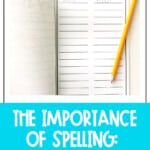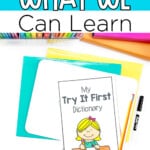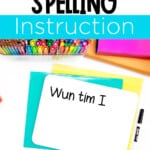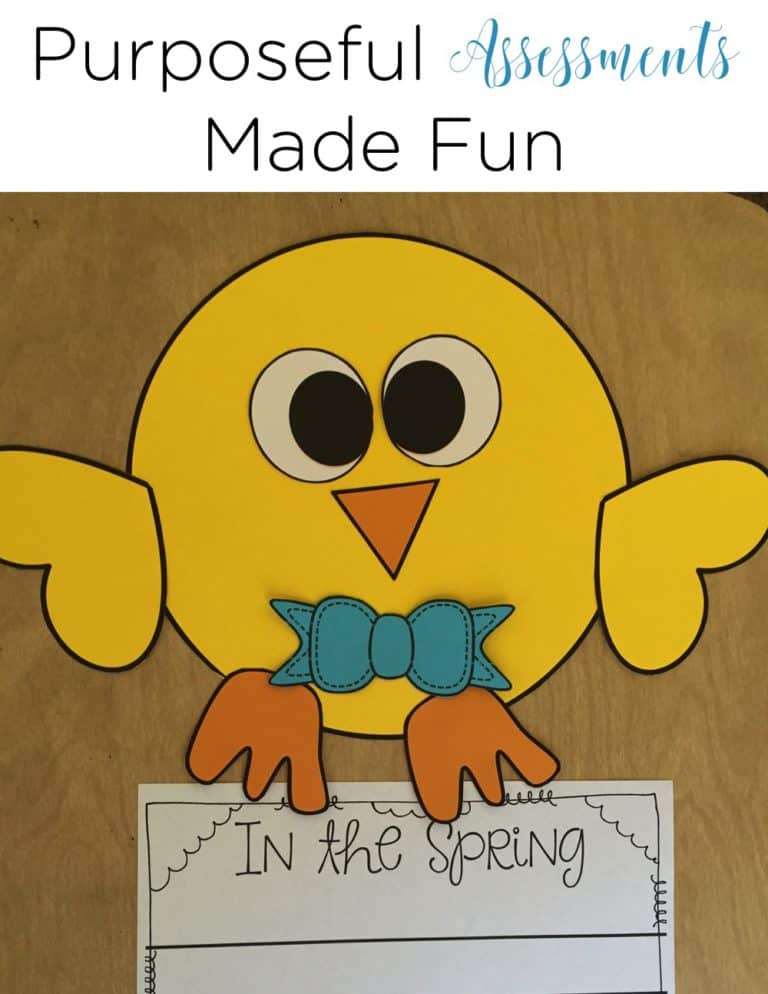
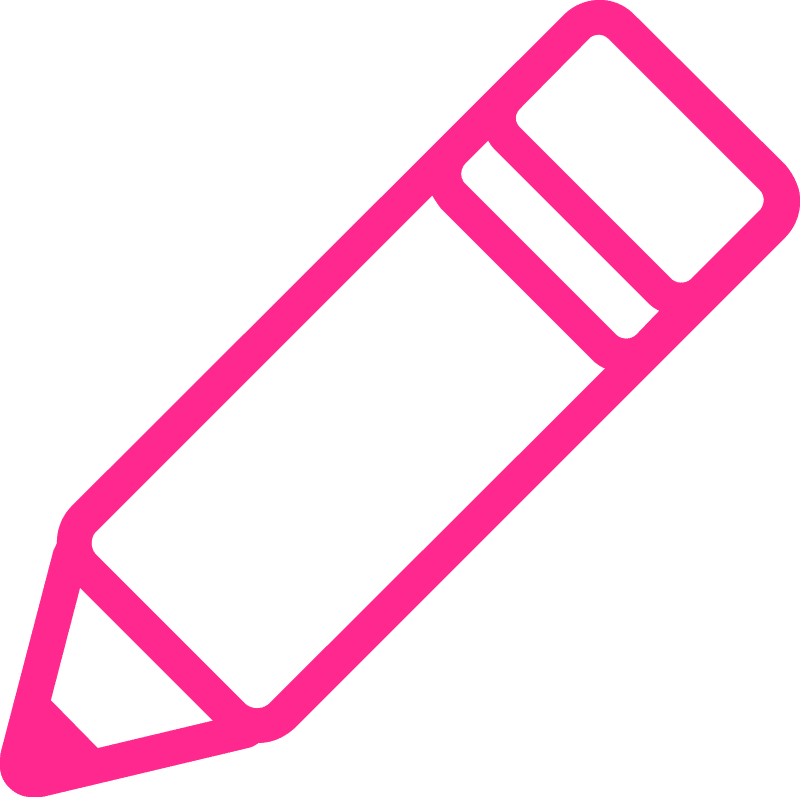
One area lots of teachers across America have been focusing on is implementing a science-based approach to reading. But what about the importance of spelling and writing? How exactly do reading and writing and spelling all tie together?
Teacher friend, if you’ve been starting to wonder about what we can gather from our students’ spelling and writing skills, you’re in the right place! When we take a close look at our students’ writing and how they spell words, we can learn quite a few things about how each student processes and applies knowledge.
Before we jump right into the importance of spelling and writing, let’s make sure we’re all on the same page with some essential vocabulary. I’m often asked what the difference is between decoding and encoding.
Decoding is taking the knowledge of letter-sound relations and letter patterns and applying it to correctly read words.
Encoding is taking a word and writing down its individual graphemes to spell the word.
Decoding and encoding are like opposites, but they both are equally important when it comes to developing strong literacy skills in our young learners.
When you take a close look at your students’ spelling and compare it to their reading abilities, you may notice they aren’t applying skills you thought they had mastered. Think about it like this: reading is the input side and writing and spelling are the output side. Once students have mastered certain phonics skills, we want them to be able to apply them in spelling, too.
For example, if you have a student writing about a time they found a dime, but they spell words without the silent e at the end, they might be needing more practice with CVCe words. Spelling is a nice, big window into students’ phonics skills! It can serve as an assessment.
Besides observing students’ writing, you can also complete a dictation assessment that follows a systematic progression with your students. This will give you a clear picture of your students’ skill sets and which phonics skills they need to continue to develop.
You can get a FREE dictation assessment inside my Reading Assessment Toolkit. Check it out here!
So often my little writers would say, “but I can’t spell it” or “I don’t know how to write it”. To this I would always respond with, “Did you try it?” or “Can you read that word? If you can read it, you can write it!” My fabulous teammate introduced me to “Try It First” Dictionaries.

Before I would help a child stretch out a word to write, I would have them first try to write it in their dictionary. Then, we would look at what they did, chat about it, and then try it together. I loved getting a peek into how they were applying what they had learned in phonics lessons!
These little dictionaries were a game changer in our classroom and encouraged students to not be afraid to try writing! Click the image below to grab one FREE!
If you’ve never considered how looking at writing and encoding can give you a picture of your students’ decoding skills, give it a try! See what you learn and how your instruction will be automatically guided.
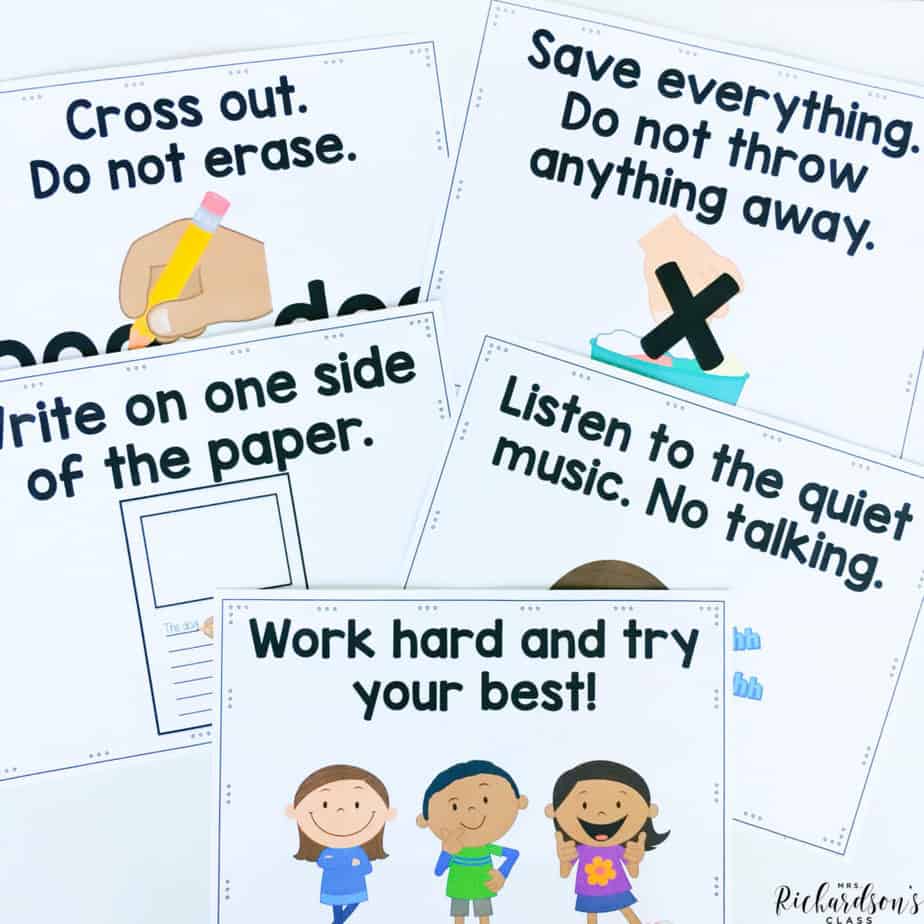

I’m a K-1 teacher who is passionate about making lessons your students love and that are easy to implement for teachers. Helping teachers like you navigate their way through their literacy block brings me great joy. I am a lifelong learner who loves staying on top of current literacy learning and practices. Here, you’ll find the tools you need to move your K-2 students forward!


| Cookie | Duration | Description |
|---|---|---|
| cookielawinfo-checkbox-analytics | 11 months | This cookie is set by GDPR Cookie Consent plugin. The cookie is used to store the user consent for the cookies in the category "Analytics". |
| cookielawinfo-checkbox-functional | 11 months | The cookie is set by GDPR cookie consent to record the user consent for the cookies in the category "Functional". |
| cookielawinfo-checkbox-necessary | 11 months | This cookie is set by GDPR Cookie Consent plugin. The cookies is used to store the user consent for the cookies in the category "Necessary". |
| cookielawinfo-checkbox-others | 11 months | This cookie is set by GDPR Cookie Consent plugin. The cookie is used to store the user consent for the cookies in the category "Other. |
| cookielawinfo-checkbox-performance | 11 months | This cookie is set by GDPR Cookie Consent plugin. The cookie is used to store the user consent for the cookies in the category "Performance". |
| viewed_cookie_policy | 11 months | The cookie is set by the GDPR Cookie Consent plugin and is used to store whether or not user has consented to the use of cookies. It does not store any personal data. |
